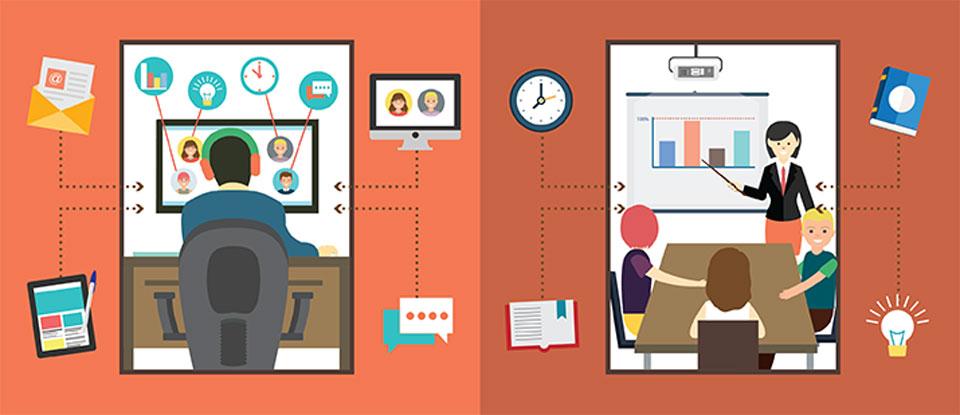Blended Learning Explained: How Traditional and Digital Education Work Together for Success
What is Blended Learning?
Blended learning is an instructional approach that integrates face-to-face teaching with online educational resources.This hybrid model leverages the strengths of both traditional and digital methodologies, creating a flexible and engaging experience tailored to varied learning needs.
- Traditional Education: Direct interaction, discussions, hands-on activities, and personalized feedback in physical classrooms.
- Digital Education: Online courses, multimedia lessons, e-learning platforms, educational apps, and interactive assessments.
The fusion of these approaches allows educators to deliver instruction that is both effective and adaptable, supporting students in achieving academic success.
How Does Blended Learning Work?
Successful blended learning programs are carefully designed to balance in-person instruction with online components. Here’s how traditional and digital education collaborate for maximum impact:
- Classroom Teaching: Core concepts and foundational skills are introduced through lectures, group work, and teacher-guided sessions.
- Digital Learning: Students reinforce and expand their knowlege through videos, interactive simulations, quizzes, and online discussions. Learning management systems (LMS), such as Moodle or Google Classroom, play a key role in streamlining resources and communication.
- Flexible Pacing: Digital components enable learners to study at their own pace, revisit difficult concepts, and pursue personalized learning pathways.
- Collaborative Projects: Both classroom and online settings encourage teamwork, problem-solving, and critical thinking through shared activities and group assignments.
The Key Benefits of Blended Learning
Blended learning offers numerous advantages for students, teachers, and institutions.By harnessing the synergy between traditional and digital education, it drives improved outcomes and satisfaction.
1. Enhanced Student Engagement
Interactive content, multimedia, and real-time feedback foster excitement and motivation. Active learning techniques, such as gamification and discussion forums, make lessons more captivating and memorable.
2. greater Flexibility and Accessibility
- Students can access lessons at any time and from anywhere, supporting diverse learning needs and styles.
- Working professionals, adult learners, and remote students benefit from self-paced study modules and virtual classrooms.
3. Personalized Learning experiences
Adaptive technologies and data analytics help educators identify individual strengths and areas for improvement, enabling tailored instruction and customized support.
4. Improved Teacher Efficiency
- Automated grading, progress tracking, and resource sharing reduce administrative burden.
- Teachers can focus more on mentoring, feedback, and innovative teaching practices.
5. Increased Collaboration
Group projects, peer-to-peer discussions, and social learning tools enhance communication skills and teamwork, vital for success in the modern workplace.
practical Tips for Implementing Blended learning
Thinking of adopting blended learning in yoru classroom or institution? Here are actionable strategies to ensure a smooth transition and maximize results:
- Choose the Right Technology: Select reliable digital platforms and tools that align with curriculum needs. Solutions like Google Classroom, Canvas, and Zoom are popular choices.
- train Educators and Students: Provide comprehensive training on using new technologies and digital resources.
- Plan for Integration: Map out which components will be delivered in person versus online. Maintain a balance that supports learning objectives.
- Monitor Progress: Use analytics and feedback tools to track student engagement, comprehension, and performance.
- Foster Communication: Create channels for regular interaction, Q&A, and peer support, both online and offline.
Case Studies: Success Stories of Blended Learning
Many schools and universities have reported remarkable results after embracing blended learning. Let’s look at a few transformative examples.
School District Upgrades Learning Outcomes
A midwestern school district in the United States implemented a blended learning approach in its mathematics curriculum.Students attended teacher-led sessions twice a week and completed online assignments through Khan Academy at home.Over two years, test scores rose by 15%, and student attendance improved.
University Adopts Hybrid Learning Model
A prominent university launched hybrid course formats for science majors, combining lectures with e-learning modules and virtual labs. Faculty noted increased student engagement and deeper understanding, while learners appreciated the flexibility to revisit lectures and simulations online.
First-Hand Experience: Voices from the Classroom
teachers and students alike are seeing the positive impact of blended learning:
James, University student: “I love that I can watch lecture recordings at night and come to class prepared with questions. My grades have improved, and I feel more confident.”
Challenges and Solutions in Blended Learning
While blended learning has clear benefits, educators should address potential challenges:
- Technology Access: Ensure all students have devices and reliable internet by leveraging school resources or community partnerships.
- Digital literacy: Offer training on digital tools to avoid frustration and maximize student participation.
- Maintaining Engagement: regularly update content, use interactive elements, and facilitate active learning both online and offline.
- Assessment Balance: Combine formative and summative assessments from both settings to accurately monitor progress.
Conclusion: Blended Learning – The Future of Education
In the age of rapid technological advancement, blended learning stands out as a powerful solution for modern education. By seamlessly fusing traditional classroom methods and digital education tools, educators can create dynamic, personalized, and flexible learning experiences that drive academic success.
Whether you’re an educational leader or a curious learner, exploring blended learning could be your key to unlocking new opportunities and overcoming the challenges of contemporary teaching.Start your journey today and empower your classroom with the best of both worlds!

